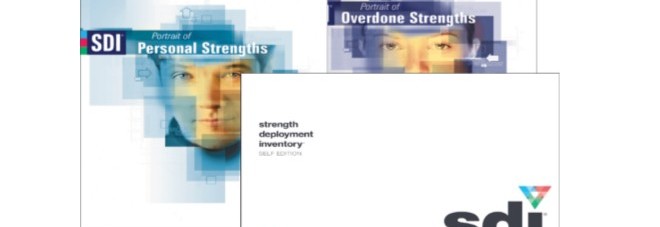As the CEO (Chief Energizing Officer) at Hartful Living including GaiaHart.com and BizBuilderCards.com; I’m a Messenger and Mentor for women entrepreneurs, connecting them to their capacity to energize their work and their lives in the art of living Hartfully. At BizBuilderCards.com, you can make a living through giving with greeting cards and gifts to build your network net worth as an additive to your current business or an easy way to send gratitude and kindness to the world.
F1 – Function – What is Yours?

May 26, 2014 | Posted in Leading Hartfully, Living Hartfully | By Gaia Hart
What is your function in life? Studies show that those who have a purpose, and are actively working towards achieving their goals, are happier than those who just show up for life each day. Set goals, change them, as your needs or situations change, and actively work on them. Do you have a mission statement and vision statement for creating your personal life as well as running your business or working in your organization? How does your professional function merge with your personal purpose? Writing down your goals, your purpose, and your function help to ingrain those visions into your subconscious to assist you in achieving them and giving you energy by looking forward to them. I’ve said it before in other posts – find your why that makes you cry and you’re on your way to living out your calling.
Anticipating and preparing for congruent personal and professional functions add energy and enthusiasm to your life. Knowing your function can give you the strength to face adversity in the world. Help increase your resilience to stress by choosing to align your workplace values with your personal values and purpose. When these two foundational things are congruent, you get the least stress and the most energy from the partnership. A playbook by Kathie Hightower called Your Enchanted Life: A Journal of Discovery & Delight at www.JumpIntoLife.net has tons of exercises and action steps to help you discover your function and what you really want. Spend some quiet time and meditate on your fuction and your why, then match that to how you can best serve. I find that being in nature helps me clear my head and clarify my thoughts.
Insights into the Motivations Behind Behaviors According to Relationship Awareness® Theory

May 18, 2014 | Posted in Leading Hartfully, Living Hartfully | By Gaia Hart
Couldn’t we all just get along? Individual and organizational success depends upon the quality and effectiveness of the working relationships between people. Conflicts that arise between people can damage a healthy personal or professional environment and affect individual or organizational productivity. By providing people with powerful insights into the motivations behind behavior, having the knowledge about Relationship Awareness® helps to build better relationships both personally and professionally. We work together more effectively when we better understand potential differences between ourselves and others — an understanding that empowers us to choose behavior that achieves intended results.
When we have a way to better predict how others will react to situations, we are better able to approach that person in the manner that will be most successful, and then be prepared to handle the outcome of the encounter. Leaders who deploy learning assessments for themselves and their teams are better positioned to improve morale and meaning at work. When we know better, we are capable of doing better and we have the tools in the form of assessments to help us know better. There are many dozens of personality and leadership assessments on the market and I will cover one of my favorites in this article.
Relationship Awareness Theory, like many psychological theories, holds that all people want to have relationships with other people. It is a Motivational Theory which addresses the motives that are behind everyday behavior when we are relating to others. Like Freudian theory, it assumes that there is meaning behind all behavior. By shifting our focus from only looking at behavior or outcomes, to looking at the motive behind the behavior, we can gain a clearer understanding of ourselves and others. Therein lies the basic difference between typologies such as the Myers-Briggs Type Indicator or the DISC, which measure behavioral outcomes and the Strength Deployment Inventory, which measures the motivations behind the behavior. For example, we all eat, which is a behavior. But we each have a different motivation behind our behavior of eating such as stress, boredom, social obligation, forced by parent, hunger, to get strong, to grow taller, or to get healthy.
Developed by Dr. Elias Porter with over forty years studying Freud, Eric Fromm and practice as a psychologist under tutelage of Carl Rogers, the theory assumes that behavior arises from purposeful strivings for gratification. Motives, what people want from relationships, are the basic antecedents for behavior. Behavior flows from how one’s character is organized and the manner in which character is organized stems from certain motivations, and motivations come from needs. People are born with a predisposition for a particular motive set. From Fromm’s writings, Dr. Porter further articulated that there were four main strivings, or motivations apparent in us, based on consistencies in behavior and characteristics predominantly found in these four main categories of motivations, along with three other blends of the main categories.
Each of us has internal motives, the why’s of our behavior and communication styles. It is assumed that we each have some quantity of each of the personal strengths in our makeup. The degree of each strength varies from person to person so that no two people are exactly alike, even when the personal strengths that we use most frequently are the same. Unlike other “personality profiles” that quantify only a handful of measured styles, Relationship Awareness Theory and the accompanying Strength Deployment Inventory measures 27 million different individual styles by acknowledging our differing styles both in and out of conflict.
Behavior and the way we communicate, work, or interact with others flows from conceptual orientation, and conceptual orientation flows from systems of strivings. Relationship Awareness Theory is based on the premise that our behavior traits are consistent with what we find gratifying in interpersonal relations and with concepts or beliefs we hold about how to interact with others to achieve those gratifications.
Relationship Awareness Theory identifies three styles of relating and communicating which have very different motives and outcomes. The first, the Valued Relating Style (VRS) is a cluster of behaviors consistent with our own Motivational Value System, which supports our sense of self-worth. It is our internal filter through which life is interpreted and understood, a unifying set of motivational values, which serve as the basis for judging ourselves and others and for engaging in behavior that enhances our sense of personal worth. When we operate out of our Valued Relating Style, we are in the zone and feel a sense of flow with natural and easy behavior that is comfortable to us and we are rewarded by that behavior.
Each Motivational Value System carries with it a cluster of behaviors called the Valued Relating Style (VRS), the external expression of the Motivational Value System. The style of relating which a person normally prefers to use is their Valued Relating Style – the style of relating to others we most often like to follow because most of the time it makes us feel good about ourselves to act that way. When we frequently use a particular set of behaviors or communication in a particular way, it becomes our most noticeable and most “characteristic” pattern of behavior.
Below are the four main motives for behavior and the three blends of behavior called the Motivational Value Systems. Each category has a light side and a dark side. When a positive trait or strength is overdone or misapplied, it becomes a detriment or a weakness. Some of the characteristic traits are listed with each style below.
- The first primary style is those whose major striving is to be genuinely helpful to and nurturing to others, with little or no concern for what they receive in return. They have the Altruistic-Nurturing Motivation. Leaders with this style may be more willing to bend a rule or let go of a desired outcome in exchange for better morale or the benefit of an individual employee – trusting that creating a better working environment will lead to a desired goal.
- Characteristic Strengths: trusting, loyal, helpful, modest, devoted, caring, supportive
- Overdone Strengths: gullible, blind follower, smothering, self-effacing, subservient, submissive
- Those associated with the exploitative orientation (the striving to take from others) whose major concern is to be leaders of others, but not at others’ expense have the Assertive-Directing Motivation. They are concerned with task accomplishment and organization of resources. The Valued Relating Style that supports this Motivational Value System would likely include competitive, persuasive or risk-taking behaviors, and would be inclined to do whatever it took to get the job done. They tend to be outcome oriented and may try to find the quickest route to a desirable result and want to be the first to market with new products or ideas. They may be willing to reduce research time or over-burden individuals in pursuit of results.
- Characteristic Strengths: self-confident, ambitious, persuasive, forceful, competitive, risk taker
- Overdone Strengths: arrogant, ruthless, abrasive, dictatorial, rash, combative, gambler
- Those who predominantly display the hoarding orientation (the striving for infinite security) whose major concern is with logic and analysis to create order and achieve self-reliance and self-dependence (not independence) as their way of relating to others have the Analytic-Autonomizing Motivation. They tend to be concerned about processes, fairness and order. They may prioritize standards, accuracy, and thoroughness in their decision-making. They may be willing to defer an opportunity or restrict access to needed resources until certain of the appropriate action.
- Characteristic Strengths: cautious, reserved, methodical, analytical, principled, fair, preserving
- Overdone Strengths: suspicious, cold, rigid, nit picking, unbending, unfeeling, stubborn,
- The last primary style is those who display a multiplicity of behaviors, in a consensus-based style, fairly evenly divided amongst the above three orientations have a varying concern depending upon the situation. They can float between the other motivations based upon their needs at that time and their way of relating to others is known as the Flexible-Cohering motivation. These people tend to be concerned about incorporating input from multiple sources to produce a result acceptable to all parties. They tend to select strategies that allow future flexibility and preserve or generate future options. In an effort to balance their decision-making, they may make decisions that look inconsistent to observers and are often termed unpredictable.
- Characteristic Strengths: flexible, open to change, socializer, experimenter, adaptable, tolerant
- Overdone Strengths: wishy-washy, inconsistent, aimless, spineless, uncaring, without focus
We learn these behaviors and become entrenched in them as we grow up by getting positive feedback through exhibiting these behaviors. We learn that when we practice this behavior and are rewarded, the behavior strengthens and will be used, or deployed, with more frequency than other behaviors. Those with other Motivational Value Systems may also deploy similar behaviors, but value them differently, choose them less often, or use them in service of different goals, making them a part of a different Valued Relating Style.
Caution must be used to group people in categories based upon their consistency in behavior according to that particular style. It gives us a very valuable base for predicting much of a person’s behavior, yet we must avoid stereotyping and predicting that because the individual behaves in “this way” as a general rule he or she will behave in “this way” in a specific instance. Thought must be given as to whether or not that particular style of behaving is most likely to produce the outcome that person wants to produce.
The Strength Deployment Inventory®, Relationship Awareness® tools are trademarks of Personal Strengths Publishing. Leaders who want to shine some light on the blind spots of themselves and their teams would be wise to embrace the teachings of Dr. Elias Porter and his assessment to help uncover the motivations behind the behaviors of a work team. Once we see what the light reveals, it is very difficult to hide in the darkness again. For this and other assessments for yourself and your team to enlighten the workplace, contact Gaia@GaiaHart.com.
Shift: Shift Tasks to Increase Energy

May 12, 2014 | Posted in Leading Hartfully, Living Hartfully | By Gaia Hart
Adults, in our infinite wisdom, think that children have short attention spans. Children know they are just shifting to a task that brings them more energy when they are getting drained from the task at hand. Shift from left-brain tasks such as budgeting and “administrivia” to right-brain-oriented tasks such as reading your mail, playing with a pet, or talking on the phone. Your productivity will increase and your mind will feel refreshed with this shift in gears. The same shift is needed when working on a right-brained creative project. If the ideas stop flowing, shift gears to something more mundane or something fun to give your brain a break.
Shifting your body also shifts your way of thinking and gives you a new perspective. Get up and move to jostle your body, jog your memory, and get that blood flowing to your brain to carry more vital oxygen to your cells upstairs. If you have been staring at a computer screen for too long, even shifting your gaze and your focus to something else will help with your energy.
Shift your tasks according to your body and brain rhythms to be more productive. If you are brain-dead after lunch, use the morning hours for creative tasks and the afternoon for less taxing projects. If you are not a morning person, then make sure your important meetings and difficult tasks are scheduled after your body wakes up and is alert enough to handle the task. Becoming more child-like, which is not to say childish, will give you more energy by going with the flow of energy and shifting your tasks, your brain, and your body to something that excites you and holds your attention.
Listen to your body and when it is fighting the urge, take a break and come back to your task when you are fresh. It will save you stress, mistakes, and mishaps. Sometimes you have to shift your space and move towards the Escape key to shake things up and shift into high gear. As I wrote this revision for my book Keys to Energize, I was floating aboard ship in the Caribbean harbor of St. Kitts to have the solitude I needed to think and type without interruption. Cruising solo having the world come to your balcony is a fantastic way to write and recharge. Take stock of your needs and figure out if you need to downshift or shift into high gear to charge up your energy.
Sometimes it’s a shift in thinking, a shift in perceptions, a shift in your environment, a shift in attitude, a shift in your belief system, or a shift in movement. It’s up to us to figure out the category, intensity, frequency, or duration of the shift for the most positive results.
The Science of Happiness and Your Health

May 2, 2014 | Posted in Leading Hartfully, Living Hartfully | By Gaia Hart
The study of the science of happiness has just recently caught up with what generally happy people already intuitively knew. In the past couple decades the science of Positive Psychology has learned:
- Happiness does not come from genetics, luck or chance
- Happiness has a lot less to do with circumstances than we originally thought
- Happiness is not the result of some big, momentous occasion or event or goal attainment – it is realized by all the little small, daily things that add up moment by moment
- Happiness is created by thing simply, daily things we decide to do – how we choose to move through the world
- Unhappiness is created by NOT choosing to do those simple, daily things that we recognize as the things that create our happiness – we must identify the things that we are doing first so we know which things to keep doing and keep putting in our lives so maintain our happiness and be consciously aware of the things we add to our lives that bring us joy and happiness as well as those things that create unhappiness and delete those things.
- Happiness comes from conscious living and living purposefully – being in tune with what you allow in your life and deciding what you do and what you don’t, having the feeling of being in control of how you live your life
Some other rules of the road for creating happiness stemming from the scientific research as part of the Positive Psychology movement:
- Keep a positive mindset and speak in positive vs. negative terms
- Make a regular practice of counting your blessings and focus on gratitude and appreciation
- Do kind things for others and help make the world a better place in the service of others
Keeping a positive mindset and speaking positive words is more powerful than most people realize. There was some amazing evidence of this at the third World Congress on Positive Psychology as reported by the Center for Disease Control. They linked the incidence of atherosclerotic disease county by county of the northeastern United States with the amount of negative words used by those counties as evidenced by the Twitter posts. The study had analyzed 40,000 words in over 80 million tweets and when the results were overlaid with a county-by-county analysis of heart attacks, it was nearly an exact correlation. The words used that were predictive of illness were expressions of anger, hostility, aggression, disengagement and lack of social support.
The study also revealed the correlation of positive attitude and lower risk of heart attacks in a county-by-county study with these maps also being nearly identical – similar to the negative words and more heart attacks. The positive words that correlated with health included fabulous, helpful share, great, interesting, gratitude.
Being in the personal development field for over 30 years; this “new” scientific evidence only certifies what many of the thought leaders, motivational speakers and experts in the field of human performance have been saying for decades. I’m very grateful there is now science behind what we’ve been touting for a long time. It gives more intellectual weigh and credibility to what we’ve been sharing with our audiences on the positive side effects of positive thinking. It has opened doors and opened the minds of many in the corporate world, in government and in the general public about how their mindset and the mindset of an organization has a great deal to do with the morale of the people and their performance.
Combining Fun and Effectiveness is good business. Often, those of us in the personal development field have found roughly 10 % of those in our audience are really attuned to the positive thinking movement; but when you link that movement to the happiness movement, then the percentage of those who are willing to embrace it skyrockets to well over 50%. I haven’t yet met anybody who doesn’t want to be happy, though I’ve met many who want to be happier or even those who are happy, but didn’t know it because of their mindset and their choice of focus. How is your mindset? How are you choosing to be happy? Have you noticed what words you choose on a daily basis? Have you paid any attention to your tweets and Facebook posts and the type of words you are using? Try transforming your words and I bet you will begin to transform your life. I dare you…
Escape: Escape for a Mental Health Break

April 24, 2014 | Posted in Leading Hartfully, Living Hartfully | By Gaia Hart
Physically fleeing the scene of stress for a holiday restores personal energy. Sometimes all we have is a “holimoment” where we can purposefully escape into daydreams or meditation if we can’t physically escape to take a break. Americans lag far behind most of the world in reaping the rewards of longer vacations and time to escape the real world responsibilities.
Employers in Europe know the secret to having employees be refreshed, renewed, and recharged for more productivity is taking longer or more frequent holidays. Europeans average five weeks per year holiday time as compared to the paltry American two weeks annual vacation. If you are saving up those vacation days, or worse yet, losing them because they have expired, you are doing yourself, your family, and your colleagues a disservice by not giving them the best you can be at optimum performance levels.
We need a break to clear our minds and re-connect in order to perform at peak performance at other times. If you must hang around the office, surround yourself with items that bring back good memories or that state your affirmations boldly. Take a mental health break by gazing at your memorabilia while you wait on hold on the phone. (Research suggests we are on hold an average of 15 minutes/day or 60 hours/year). Fresh air and movement do wonders, as do office toys or a personalized treasure map of things you want to accomplish in your life.
Treasure maps are collages of pictures and words representing your desires, goals, or affirmations. These posters filled with cut and past magazine photos and headlines are a physical and mental reminder of what’s dear, and act as a magnet to attract you closer to your goals and aspirations. The more you use the powerful force of visualization; the imagery of your dreams becomes imbedded into your subconscious and you start behaving in a manner to elicit responses to move you towards your image. There have been numerous studies of athletes and performers using guided imagery and visualization to help them compete and win. When you start imagining the possibilities and show your brain concrete images, it sends your body signals to help make that image materialize.
Travel can generate excitement, adventure, intrigue, and other awesome feelings all rolled up into one package. Experience other cultures and new ways of life, or just get out of town for a weekend escape. We need this time for creative renewal in order to be our best to meet our challenges. Seeing how other cultures live gives us a fresh perspective on what may be out of kilter back home. Flexibility and an attitude of discovery go a long way in creating positive travel experiences. Where are you going next?
Keys to Success Found in the Cauldron of Knowledge

April 20, 2014 | Posted in Leading Hartfully, Living Hartfully, Wealthy Woman | By Gaia Hart
I have a cauldron. Doesn’t everybody? I call it my Cauldron of Knowledge because that’s where I keep the magazines, books and other publications I’m reading at the moment or have on my To-Do list. I used to keep a bookshelf until I rescued a cute little doggie who had a penchant for knowledge. OK, I think he had a penchant for paper. Specifically tearing up paper and listening to the ripping sound as he held down the pages with his paw and tore the paper with his teeth. He seem to get such pleasure out of such a simple thing.
My need to reading pleasure and knowledge surpassed his need to shred, so I ditched the bookshelf, put most of the books behind an armoire door and put the current batch in my cauldron. His legs are too short to jump up into it, so I feel safe with keeping the wisdom stored in a big pot.
Rummaging through the reads this morning, I came across a poem by William Arthur Ward who wrote so eloquently on the Keys to Success. And since I’m doing a series on the Keys to Energize, I thought this fit nicely into the series.
The Key to Success is to:
Believe while others are doubting.
Plan while others are playing.
Study while others are sleeping.
Decide while others are delaying.
Prepare while others are daydreaming.
Begin while other are procrastinating.
Work while others are wishing.
Save while others are wasting.
Listen while others are talking.
Smile while others are frowning.
Commend while others are criticizing.
Persist while others are quitting.
I believe that about sums it up nicely. Thank you, William Arthur Ward for providing today’s inspiration while sipping some tea on the deck with my pup.
F2: Fun & “F”ectiveness to Improve Your Energy

April 16, 2014 | Posted in Leading Hartfully, Living Hartfully | By Gaia Hart
Fun and effectiveness combine to increase peak performance. Put the FUN back into functional by using unique, everyday items such as color-coded file folders, bubble pens, calligraphy pens instead of typing labels, photos of loved ones, stress toys, humorous recognition cards/awards/coupons, and cartoon calendars. Learning and productivity are enhanced when fun is mixed with effectiveness to generate a creative and enjoyable environment for children and adults alike. It is a proven fact, work made fun gets done and good times lead to good business. Just like sports figures, we can’t sprint non-stop all day and expect to have any energy left over. We must mix in our fun with our effectiveness for peak performance.
Workers are like cows; we produce more when we are content. Many surveys cite having fun as a top workplace motivator. World-class athletes and entertainers also mention fun as a key factor in the success and enjoyment of their work. Fun is an attitude – seek out the humor in your daily life and cultivate an eye and an ear for humorous alternatives. What are you doing to add more fun into your life? Did you have fun things on your Ideal Day list that was your assignment in the last post? What new, fun things can you add to your life? What have you not yet tried? How can you make your work or your work space more fun? Ruminate on these questions to brainstorm how you can add more fun and effectiveness to your day. To help you keep energized, tune in to more blog posts.
Positive Psychology: What Happiness has to do With Your Personal Energy

April 10, 2014 | Posted in Leading Hartfully, Living Hartfully | By Gaia Hart
You may have noticed a theme here this year. I’ve decided to offer an alternating series on Happiness and Personal Energy. I’ve been researching, studying, living and making a living from educating others about how to improve both for their personal and professional lives as well as showing organizations how to improve both to beef up their bottom line. The two are intricately intertwined because a large majority of our energy is emotional energy. If our mindset is set on negativity, sadness, dark drama, emotional baggage and such; no matter how many energy inserts we add to our lives, we will still feel drained of energy.
The Positive Psychology movement gained a foothold about 20 years ago and it’s been a very interesting thing to watch this shift in the science of psychology. Martin Seligman, a Philadelphia psychologist is the father of the field of positive psychology and happiness. He began by asking “what if happiness was more than the absence of sadness and what if we could have a kind of psychology that focused on the positive instead of on the negative and what has gone wrong?”
Since that time, in January 2005 TIME Magazine ran a cover story on The Science of Happiness, then Fortune 500 corporations, the military, Harvard, the Federal Government and a growing mass of the public began to run with this theory. In 2010, Zappos CEO Tony Hsieh published his business memoir Delivering Happiness and it debuted on the New York Times Bestseller list at number 1. There is something to this happiness thing.
Contrary to what the Declaration of Independence says; happiness is not something we PURSUE, it’s something we DO…or rather an accumulation of the many little things we do every day. It’s HOW we decide to live our lives. One of the very best exercises I can share in pinpointing how to realize happiness in our lives is the Ideal Day writing assignment. I believe I’ve mentioned it before and it bears repeating because it is so powerful in its simplicity.
Find quiet time and get comfy to spend as long as you need to dream and visualize your Ideal Day and write it down in exquisite detail. Capture all the little things that bring you happiness such as fuzzy puppies, lush towels, down comforters, soothing smooth jazz music, fresh-squeezed pink grapefruit juice, 80% dark chocolate, cashmere…but I digress. Begin with when you wake up and move throughout your day and describe what your senses experience, what you do, how you do it and what your surroundings look like, sound like and feel like. Afterwards, do a gap analysis of your Ideal Day and your current life. What is missing? What can you easily insert into your current life from your Ideal Day? If you can’t focus on just one day. Do what I did and write down your Ideal Day for the Fall/Winter and one for the Spring/Summer because mine included skiing to sailing and I needed more than one day to capture it.
Next, look at your gap analysis and see what you already have in your current life from your Ideal Day? What can you celebrate? What do you have or what are you doing that already brings joy and happiness that you may be taking for granted? Often, we neglect to honor and enjoy certain things until we don’t have them. We think it’s just a normal thing. I’ve recently experienced this by having knee replacement surgery. Down for the count for several weeks with a walker and crutches and I knew immediately that mobility and absence of pain/vitality were things I didn’t savor nearly enough. Yep, being able to move through the world confidently that I won’t fall down is now on my list in my Ideal Day.
Once you find things from your Ideal Day that you don’t yet have; make a plan to be, do, have those things that would bring you joy and happiness and energy. When we are happier, we have more energy. Sadness brings lower energy. The research says that it’s not the big things that come around few and far between, it’s the smaller daily things that create the happiness. How you realize happiness and increased personal energy is by doing simple things and doing them often. Your assignment is to write down your Ideal Day. Your homework is then to make a list of what you already have or do from the Ideal Day and then make a list of what you can insert into your life from the exercise.
Meet me back here in a few weeks and get your next installment of the Happy Factor.
